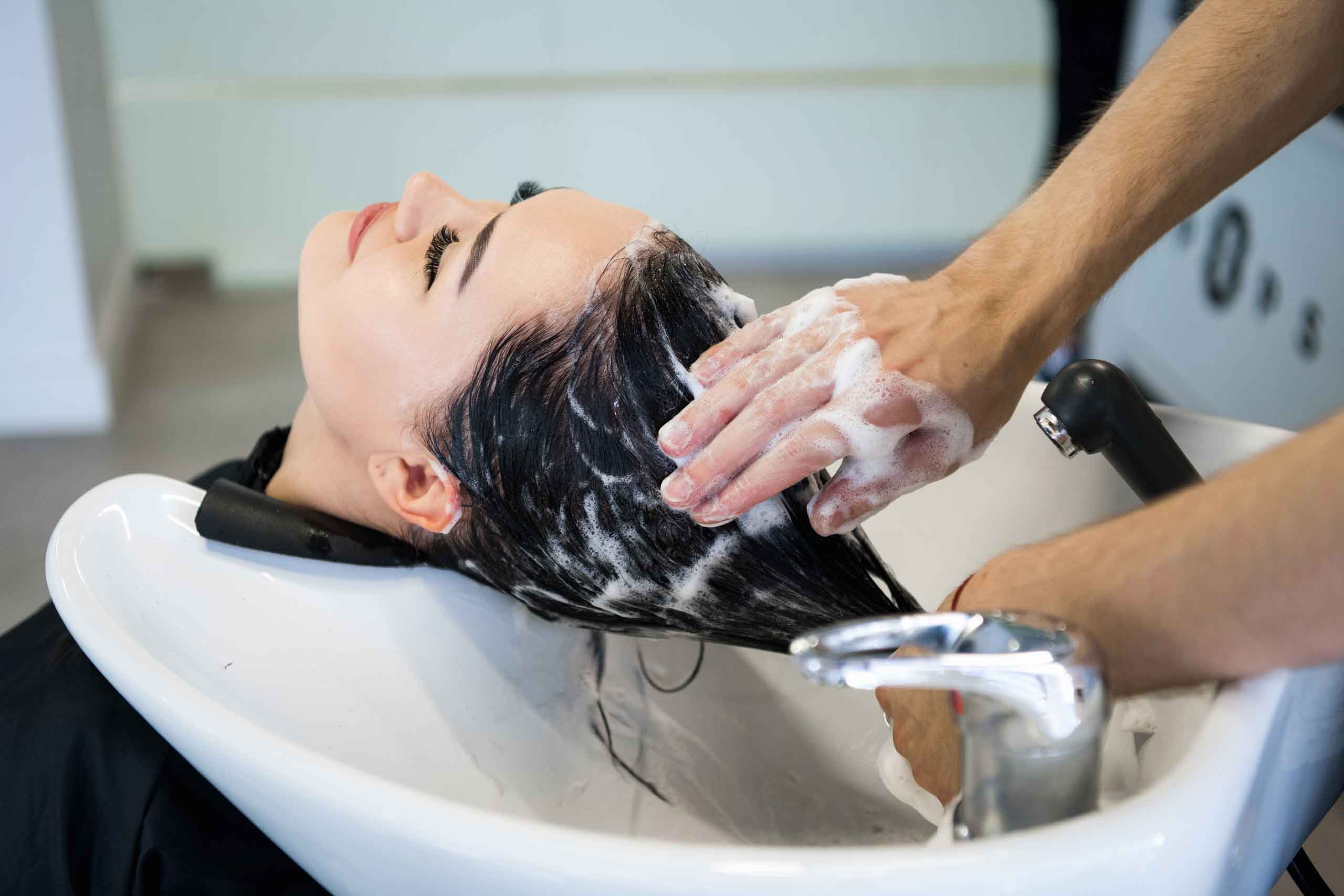At Salon 56, we love pampering you whilst you visit us in the salon but we want you to be able to get that same healthy hair feel at home too. We’re here to give you advice and tips on what you can do to encourage strong and healthy hair growth in your daily hair care routine.
Our hair is often given a bit of a beating in everyday life. Whether it is exposure to the elements, excess brushing or rough towel drying, those tiny strands of protein have to withstand a lot to stay looking healthy and shiny. So what can we do to help them?
Prepping your hair for cleaning
Your hair is more prone to breakage when it is wet so always brush it to remove tangles before you wash it. You’ll find it easier to comb through your conditioner as well if you follow this step.
Also consider the temperature of your shower. Regular, steaming hot showers can cause scalp irritation and weaken the hair growth, so try turning down the temperature a little and if you are feeling brave, a little cold water at the end is great for sealing the cuticles and boosting shine.
Think twice about shampooing
The frequency you need to wash your hair very much depends on how oily your scalp is. If you find it is particularly oily, then washing your hair once a day makes sense, however if your hair is chemically treated or as we get older, you may find that you produce less oil so you may not need to wash as frequently.
When washing, only use enough product to just cover your hair and focus on getting the scalp clean. Too much shampooing of the hair lengths can make your hair more flyaway and dull. You should also try to massage your scalp often to increase the blood circulation and encourage better hair growth.
You should always follow shampooing with a conditioner but make sure you focus this on the ends of your hair and avoid your scalp. Conditioner is great for protecting your hair from UV rays and improving strength, but too much can leave hair looking limp and dull.
Always use products that are suited to your hair type and avoid those with harsh chemicals in. If you are unsure, speak to your stylist who will be able to recommend a suitable product for you.
So what about drying?
Firstly, never rough dry your hair harshly with a towel. Wet hair is less resilient than dry hair and rubbing will cause breakages and damage. If you do want to remove some of the excess moisture try using a microfibre absorbent hair towel and just gently hold the hair to squeeze the moisture out.
Whilst letting your hair air dry might seem like the best option, it can actually cause more damage than blow drying. When your hair comes into contact with water it swells and the longer it swells, the more risk there is of damaging the hair proteins. However, blasting your hair with a hot hairdryer isn’t the answer either.
The best solution is to use a heat protection product and gently blow dry using a hair dryer on a cooler setting.
Straightening and Styling
Again, you need to be very cautious with protecting your hair from heat. If your straighteners have a heat setting on them, make sure you are using the right setting for your hair type and not just the hottest one for quickness. Hair should also be completely dry before you use a straightening iron – if you hear that sizzle, that is very bad news for your hair! The moisture in your hair basically boils and causes blistering which shows as breakage and split ends. So turn the heat down and always use a heat protection product.
If you wear your hair up a lot, think about changing your style from time to time and try not to tie hairbands too tightly. Placing pins and clips in the same place every time will localise the weak spots in your hair so think about having 3/4 styles you can mix up to avoid this.
There are many factors that effect the health of your hair and we want to use this blog as a space to discuss these and hopefully offer you some useful insights. Over the coming months we’ll be covering topics like nutrition and diet, hormones, menopause and how certain health conditions can effect hair health.

